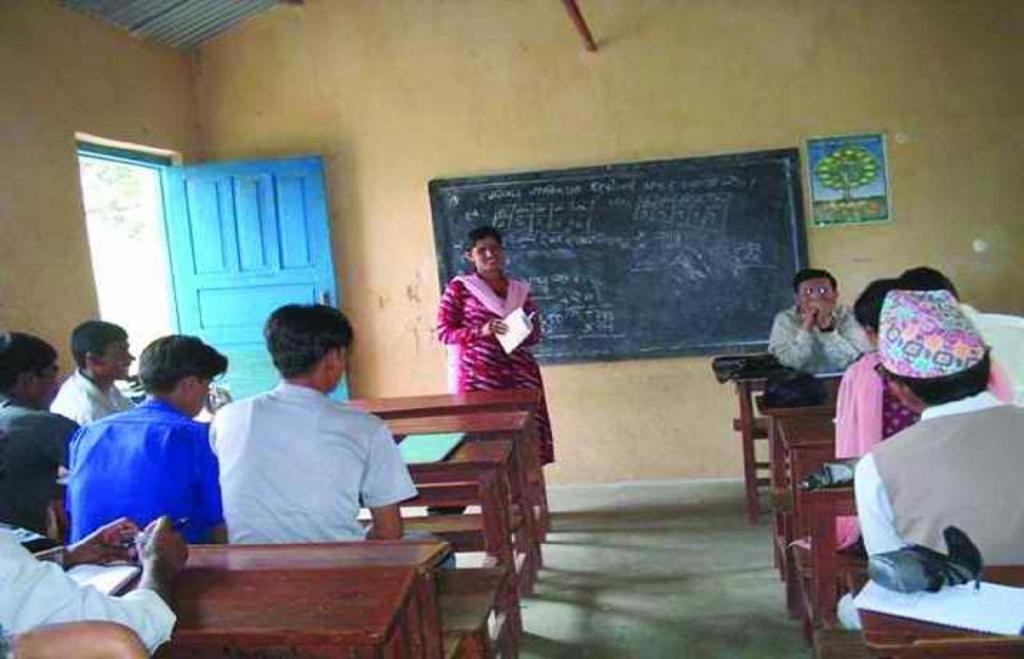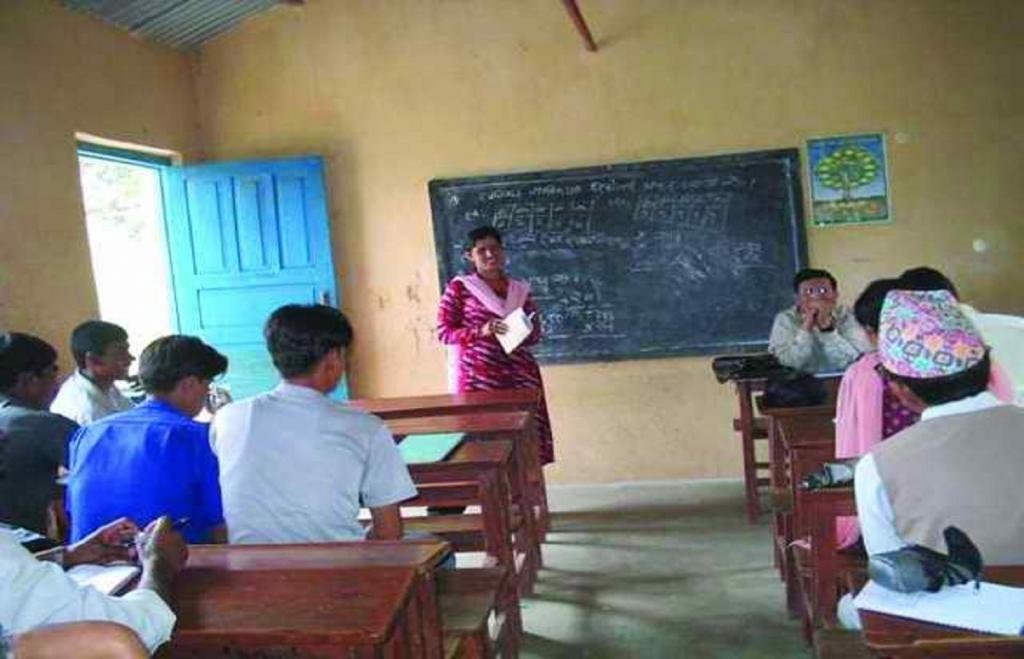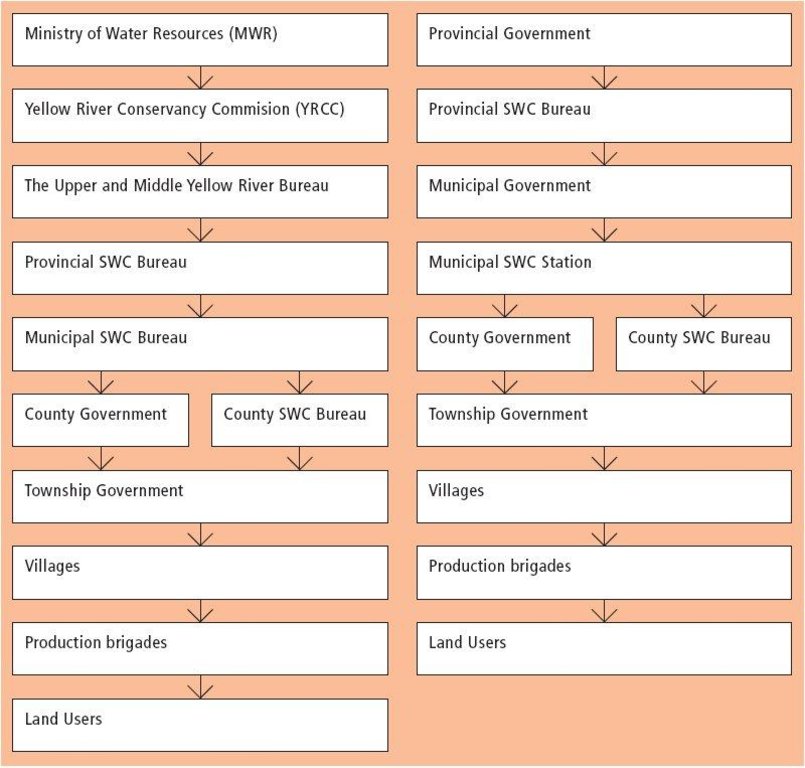Terrace approach [ຈີນ]
- ການສ້າງ:
- ປັບປູງ:
- ຜູ້ສັງລວມຂໍ້ມູນ: Yaolin Wang
- ບັນນາທິການ: –
- ຜູ້ທົບທວນຄືນ: Laura Ebneter, Deborah Niggli
approaches_2399 - ຈີນ
ເບິ່ງພາກສ່ວນ
ຂະຫຍາຍທັງໝົດ ຍຸບທັງໝົດ1. ຂໍ້ມູນທົ່ວໄປ
1.2 ລາຍລະອຽດ ການຕິດຕໍ່ ຂອງບຸກຄົນທີ່ຊັບພະຍາກອນ ແລະ ສະຖາບັນ ການມີສ່ວນຮ່ວມ ໃນການປະເມີນຜົນ ແລະ ເອກະສານ ຂອງວິທີທາງ
ຜູ້ຊ່ຽວຊານ ດ້ານການຄຸ້ມຄອງ ທີ່ດິນແບບຍືນຍົງ:
ຜູ້ນໍາໃຊ້ທີ່ດິນ:
ຜູ້ຊ່ຽວຊານ ດ້ານການຄຸ້ມຄອງ ທີ່ດິນແບບຍືນຍົງ:
ຜູ້ຊ່ຽວຊານ ດ້ານການຄຸ້ມຄອງ ທີ່ດິນແບບຍືນຍົງ:
ຊື່ຂອງໂຄງການ ທີ່ອໍານວຍຄວາມສະດວກ ໃນການສ້າງເອກກະສານ ຫຼື ປະເມີນດ້ານແນວທາງ (ຖ້າກ່ຽວຂ້ອງ)
Book project: where the land is greener - Case Studies and Analysis of Soil and Water Conservation Initiatives Worldwide (where the land is greener)ຊື່ຂອງ ສະຖາບັນການຈັດຕັ້ງ ທີ່ອໍານວຍຄວາມສະດວກ ໃນການສ້າງເອກກະສານ ຫຼື ປະເມີນແນວທາງ (ຖ້າກ່ຽວຂ້ອງ)
Department of Resources and Environmental Science, Beijing Normal University (Department of Resources and Environmental Science, Beijing Normal University) - ຈີນຊື່ຂອງ ສະຖາບັນການຈັດຕັ້ງ ທີ່ອໍານວຍຄວາມສະດວກ ໃນການສ້າງເອກກະສານ ຫຼື ປະເມີນແນວທາງ (ຖ້າກ່ຽວຂ້ອງ)
ISRIC World Soil Information (ISRIC World Soil Information) - ເນເທີແລນຊື່ຂອງ ສະຖາບັນການຈັດຕັ້ງ ທີ່ອໍານວຍຄວາມສະດວກ ໃນການສ້າງເອກກະສານ ຫຼື ປະເມີນແນວທາງ (ຖ້າກ່ຽວຂ້ອງ)
GEF/OP12 Gansu Project (GEF/OP12 Gansu Project) - ຈີນ1.3 ເງື່ອນໄຂ ຂອງການນໍາໃຊ້ເອກກະສານຂໍ້ມູນ ຂອງ WOCAT
ຜູ້ສັງລວມ ແລະ ບັນດາຜູ້ຕອບແບບສອບຖາມ ຍອມຮັບໃນເງື່ອນໄຂ ການນໍາໃຊ້ຂໍ້ມູນເອກະສານ ທີ່ສ້າງຂື້ນ ໂດຍຜ່ານ ອົງການ WOCAT:
ແມ່ນ
1.4 ເອກະສານອ້າງອີງ (ຫຼາຍ) ກັບແບບສອບຖາມ (ຫຼາຍ) ເຕັກໂນໂລຢີ ຂອງດ້ານການຄຸ້ມຄອງ ດິນແບບຍືນຍົງ
2. ພັນລະນາ ແນວທາງການຄຸ້ມຄອງນໍາໃຊ້ດິນແບບຍືນຍົງ
2.1 ການອະທິບາຍ ໂດຍຫຍໍ້ ຂອງວິທີທາງ
Highly organised campaign to assist land users in creating terraces: support and planning from national down to local level.
2.2 ການອະທິບາຍ ລາຍລະອຽດ ຂອງວິທີທາງ
ການອະທິບາຍ ລາຍລະອຽດ ຂອງວິທີທາງ:
Before 1964, the slopes on China's Loess Plateau were cultivated up and down by machinery. Consequently soil and water were lost at high rates, and fertility and yields declined. Accessibility to cultivated land became more and more difficult due to dissection by gullies. The first terraces were established by self-mobilisation of the local land users. However there was no standard design. Furthermore, as the individual plots were very small and scattered all over the village land, terracing needed better coordination. Between 1964 and 1978, the local government at the county level took the initiative of organising farmers and planning terrace implementation according to specific technical design on a larger scale. At that time the land was still communally managed by production brigades. Through mass mobilisation campaigns people from several villages were organised to collectively terrace the land - village by village - covering around 2,000 hectares each year. Labour was unpaid.The Yellow River Conservancy Commission (YRCC) came into being in 1948 - and the Upper and Middle Yellow River Bureau in 1977. This gave greater impetus to the implementation of SWC in the Loess Plateau. After 1978, land use rights were allocated to individuals (though official ownership was still vested in the state). SWC specialists and county level SWC bureaus started to work with groups of farmers who had land use rights within a given area. Survey and design were carried out. The farmers organised themselves, consolidated the parcels of land, and then after the conservation work was done they redistributed the terraced fields.
In the 1980s the government started to financially support land users involved in SWC projects. Subsidies ranged from (approx.) US$* 20/ha in projects at county level, to US$* 55/ha for national projects (eg through the Yellow River Commission), and up to US$* 935/ha when World Bank projects were involved - as in the recent past. Implements were provided by the farmers themselves. Then, in 1988 a nationwide project in SWC - which originally was proposed at county level - was approved by the national government. Furthermore, in 1991 a national law on SWC came into force. Protection of the Yellow River and associated dams became a priority at regional and national levels. In total, within Zhuanglang County, 60 SWC specialists/extensionists cover an area of 1,550 km2, and most of the terraces were built with low levels of subsidies. Annual plans about implementation of new SWC measures were made during summer. Small areas were planned at village or township level, whereas bigger areas (> 7 hectares) were designed at county level. Implementation then took place during winter. Terracing was implemented first where access was easiest and closest to settlements, and only later, further away. * exchange rate: 1 US$ = 8 Chinese Yuan (May 2006).
2.3 ຮູບພາບຂອງແນວທາງ
2.5 ປະເທດ / ເຂດ / ສະຖານທີ່ບ່ອນທີ່ແນວທາງໄດ້ຖືກນໍາໃຊ້
ປະເທດ:
ຈີນ
ພາກພື້ນ / ລັດ / ແຂວງ:
Gansu Province, Loess Plateau Region
Map
×2.6 ວັນທີເລີ່ມຕົ້ນ ແລະ ສິ້ນສຸດ ການຈັດຕັ້ງປະຕີບັດ ວິທີທາງ
ສະແດງປີຂອງການເລີ່ມຕົ້ນ:
1964
2.7 ປະເພດຂອງແນວທາງ
- ພາຍໃຕ້ໂຄງການ / ແຜນງານ
2.8 ເປົ້າໝາຍ / ຈຸດປະສົງຫຼັກ ຂອງການຈັດຕັ້ງປະຕິບັດ ວິທີທາງ
Aims of the approach are: - water conservation (this is a semi-arid area), - soil conservation: reduce soil loss on the sloping and erosion-prone land of loess plateau, - enhancing soil fertility, and consequently production, - improve people's living conditions, These primary objectives were to be achieved by building level bench terraces on a large scale through a structured and organised campaign. Finally at the national level, a fourth aim was added: the protection of the Yellow river (avoiding floods and reducing the sediment load)
The SLM Approach addressed the following problems: - lack of organisation, capital and technical knowledge in farmer communities to counter the underlying problems of water loss, soil loss, fertility decline and downstream effects on the Yellow River (floods and sediment) at catchment level, - absence or poor maintenance of erosion control measures
2.9 ເງື່ອນໄຂອໍານວຍ ຫຼື ຂັດຂວາງການປະຕິບັດຂອງເຕັກໂນໂລຢີ / ເຕັກໂນໂລຢີການນໍາໃຊ້ຕາມແນວທາງ
ມີຄວາມສາມາດ / ເຂັ້າເຖິງຊັບພະຍາກອນດ້ານການເງິນ ແລະ ການບໍລິການ
- ເຊື່ອງຊ້ອນ
Initially farmers were not paid and as they had no immediate benefit from, or security over, the use of the land. The investment in construction was a heavy burden on poor farmers.
Treatment through the SLM Approach: After 1988, labour inputs by farmers started to be partly covered by subsidies provided by local and national government
ກ່ຽວກັບກົດໝາຍ (ສິດນໍາໃຊ້ດິນ, ສິດນໍາໃຊ້ນໍ້າ)
- ເຊື່ອງຊ້ອນ
Land users leased the land from the state and land users??? rights were insecure in the long term. Investments in SWC were not encouraged.
Treatment through the SLM Approach: National government persuaded land users to implement terraces by 'selling' the benefits (increased yield and easier workability of the land). After 1978, individual user rights motivated farmers to invest in SWC.
The existing land ownership, land use rights / water rights hindered a little the approach implementation Ownership of land and its resources belongs to state and communities: land users only lease the land for a period of time. Due to uncertainty over future user rights and possible reallocation in response to changes in population and household needs, additional investments into measures may be hindered. 1978 a first major change took place by allocating some individual land use rights.
ຄວາມຮູ້ກ່ຽວກັບການຄຸ້ມຄອງ ທີ່ດິນແບບຍືນຍົງ, ການເຂົ້າເຖິງການສະໜັບສະໜູນ ທາງດ້ານວິຊາການ
- ເຊື່ອງຊ້ອນ
Poor knowledge of how to reduce water loss, soil loss and fertility loss. Technical solutions were needed at the catchment level, involving the whole population.
Treatment through the SLM Approach: Enhanced guidance by SWC specialists.
3. ການມີສ່ວນຮ່ວມ ແລະ ບົດບາດຂອງພາກສ່ວນທີ່ກ່ຽວຂ້ອງທີ່ໄດ້ມີສ່ວນຮ່ວມ
3.1 ຜູ້ມີສ່ວນຮ່ວມ ໃນວິທີທາງ ແລະ ພາລະບົດບາດ ຂອງເຂົາເຈົ້າ
- ຜູ້ນໍາໃຊ້ດິນໃນທ້ອງຖິ່ນ / ຊຸມຊົນທ້ອງຖິ່ນ
- ພະນັກງານຂັ້ນສູນກາງ (ຜູ້ວາງແຜນ, ຜູ້ສ້າງນະໂຍບາຍ)
3.2 ການມີສ່ວນຮ່ວມຂອງຜູ້ນໍາໃຊ້ທີ່ດິນໃນທ້ອງຖິ່ນ / ຊຸມຊົນທ້ອງຖິ່ນໃນໄລຍະທີ່ແຕກຕ່າງກັນຂອງແນວທາງ
| ການລວບລວມ ເອົາຜູ້ນໍາໃຊ້ດິນ ໃນທ້ອງຖິ່ນ / ຊຸມຊົນທ້ອງຖິ່ນ | ໃຫ້ລະບຸ ຜູ້ໃດທີ່ມີສ່ວນຮ່ວມ ໃນແຕ່ລະກິດຈະກໍາ? | |
|---|---|---|
| ການເລີ່ມຕົ້ນ / ແຮງຈູງໃຈ | ການຮ່ວມມື | Land users started implementing terraces but SWC specialists at the country level assisted in designing standards for terrace construction and township governments and production brigades organised whole villages and watersheds |
| ການວາງແຜນ | ການບໍ່ປະຕິບັດ | Being consulted in the planning phase. Experienced peasants may be involved in introducing the local situation. |
| ການປະຕິບັດ | ການຮ່ວມມື | Major organisation done through the SWC bureau specialists with the village organisation including land users. Land users were actively involved in implementation. |
| ຕິດຕາມກວດກາ / ການປະເມີນຜົນ | ບໍ່ມີ | reporting; No participation of land users |
| Research | ບໍ່ມີ | on-station; No participation of land users |
3.3 ແຜນວາດ (ຖ້າມີ)
ການອະທິບາຍ:
Terrace construction supported by projects from MWR, YRCC and international organisations (left) and terrace construction supported by provincial funds (right).
3.4 ການຕັດສິນໃຈກ່ຽວກັບການຄັດເລືອກເຕັກໂນໂລຢີຂອງການຄຸ້ມຄອງທີ່ດິນແບບຍືນຍົງ / ເຕັກໂນໂລຢີ
ລະບຸ ຄົນທີ່ຕັດສິນໃຈ ກ່ຽວກັບການຄັດເລືອກຂອງ ເຕັກໂນໂລຢີ / ເຕັກໂນໂລຢີ ຈະໄດ້ຮັບການປະຕິບັດ:
- ຜູ້ຊ່ຽວຊານ ຫຼັກດ້ານການຄຸ້ມຄອງ ທີ່ດິນແບບຍືນຍົງ, ມີການຕິດຕາມປຶກສາຫາລືກັບຜູ້ນໍາໃຊ້ທີ່ດິນ
ອະທິບາຍ:
Decisions on the method of implementing the SLM Technology were made by by politicians / leaders. Decisions are made by politicians/SWC specialists; land users are consulted in the planning phase (experienced farmers may be involved initially).
4. ການສະໜັບສະໜູນທາງດ້ານວິຊາການ, ການສ້າງຄວາມສາມາດ, ແລະ ການຈັດການຄວາມຮູ້.
4.1 ການສ້າງຄວາມສາມາດ / ການຝຶກອົບຮົມ
ຜູ້ນໍາໃຊ້ທີ່ດິນ ຫຼື ພາກສ່ວນກ່ຽວຂ້ອງອື່ນໆ ໄດ້ຮັບການຝຶກອົບຮົມບໍ່?
ແມ່ນ
ໃຫ້ລະບຸ ຜູ້ໃດທີ່ໄດ້ຮັບການຝຶກອົບຮົມ:
- ຜູ້ນໍາໃຊ້ດິນ
ຮູບແບບຂອງການຝຶກອົບຮົມ:
- ການເຮັດຕົວຈິງ
- ຕົວຕໍ່ຕົວ
- ເນື້ອທີ່ສວນທົດລອງ
- ຫຼັກສູດ
ໃນຫົວຂໍ້:
Until 1978 the 'pyramid system' was used: the county level trained the township level, which trained the village level, which in turn trained the production brigades/farmers, who then trained other production brigades and farmers.
4.2 ການບໍລິການໃຫ້ຄໍາປຶກສາ
ເຮັດຜູ້ໃຊ້ທີ່ດິນມີການເຂົ້າເຖິງການບໍລິການໃຫ້ຄໍາປຶກສາ?
ແມ່ນ
ລະບຸວ່າການສະໜອງ ການບໍລິການ ໃຫ້ຄໍາປຶກສາ:
- ໃນພື້ນທີ່ຂອງຜູ້ນໍາໃຊ້ດິນ
ອະທິບາຍ / ຄວາມຄິດເຫັນ:
Key elements: Pyramid system is also used for extension. At each government level (county, district and provincial levels) there is a SWC division in charge of SWC activities includ. extension (farm visits)
4.3 ສະຖາບັນການສ້າງຄວາມເຂັ້ມແຂງ (ການພັດທະນາອົງການຈັດຕັ້ງ)
ສະຖາບັນ ໄດ້ຮັບການສ້າງຕັ້ງຂື້ນ ຫຼື ໄດ້ຮັບການສ້າງຄວາມເຂັ້ມແຂງ ໂດຍການຈັດຕັ້ງປະຕິບັດ ວິທີທາງບໍ່?
- ມີ, ພໍສົມຄວນ
ລະບຸ ທາງສະຖາບັນ ໄດ້ສ້າງຄວາມເຂັ້ມແຂງ ໃນລະດັບໃດ (ຫຼາຍ):
- ທ້ອງຖິ່ນ
ລະບຸ ປະເພດ ຂອງສະໜັບສະໜູນ:
- ທາງດ້ານການເງິນ
4.4 ຕິດຕາມກວດກາ ແລະ ປະເມີນຜົນ
ການຈັດຕັ້ງປະຕິບັດ ວິທີທາງ ໄດ້ມີການປະເມີນຜົນ ແລະ ຕິດຕາມບໍ?
ແມ່ນ
ຄວາມຄິດເຫັນ:
bio-physical aspects were regular monitored through measurements; indicators: runoff loss, sediment load, soil moisture
technical aspects were regular monitored through measurements; indicators: structure of terraced areas, slope of risers, levelness of terrace surface
socio-cultural aspects were ad hoc monitored through observations; indicators: land users' perceptions of terraces
economic / production aspects were regular monitored through measurements; indicators: yield, income of land users
area treated aspects were regular monitored through measurements; indicators: terraced area
land users involved aspects were ad hoc monitored through measurements; indicators: number of farmers directly involved in terracing and farmers benefited directly
management of Approach aspects were ad hoc monitored through observations; indicators: number of small watersheds terraced
There were changes in the Approach as a result of monitoring and evaluation: The approach changed fundamentally from self-mobilisation to organised mass movements guided by the government.
4.5 ການຄົ້ນຄວ້າ
ນີ້້ແມ່ນສ່ວນໜຶ່ງ ການຄົ້ນຄວ້າ ຂອງວິທີທາງບໍ່?
ແມ່ນ
ລະບຸ ຫົວຂໍ້:
- ເສດຖະສາດ / ການຕະຫຼາດ
- ລະບົບນິເວດ
- ເຕັກໂນໂລຢີ
ໃຫ້ຂໍ້ມູນ ເພີ່ມເຕີມ ແລະ ກໍານົດ ຜູ້ໃດເຮັດການຄົ້ນຄວ້າ:
carried out at the provincial and national levels, mostly by technical staff. Land users have not been involved. Terrace building is based on scientific design, according to local conditions.
Research was carried out on station
5. ການສະໜັບສະໜູນທາງດ້ານການເງິນ ແລະ ອຸປະກອນຈາກພາຍນອກ
5.1 ງົບປະມານປະຈໍາປີ ສໍາລັບວິທີທາງ ຂອງການຄຸ້ມຄອງ ທີ່ດິນແບບຍືນຍົງ
ຄໍາເຫັນ (ຕົວຢ່າງ: ແຫຼ່ງຂໍ້ມູນຫຼັກ ຂອງການສະໜອງທຶນ / ຜູ້ໃຫ້ທຶນທີ່ສໍາຄັນ):
Approach costs were met by the following donors: government (national): 10.0%; local community / land user(s) (-): 90.0%
5.3 ເງິນສົມທົບສໍາລັບການນໍາໃຊ້ສະເພາະປັດໃຈຂາເຂົ້າໃນການຜະລີດກະສິກໍາ (ລວມທັງແຮງງານ)
ຖ້າແຮງງານ ຂອງຜູ້ນໍາໃຊ້ດິນ ໄດ້ຮັບການສະໜັບສະໜູນ ປັດໃຈຂາເຂົ້າ, ແມ່ນບໍ່:
- ຈ່າຍເປັນເງິນສົດ
ຄວາມຄິດເຫັນ:
Beteween the 1960s-1970s farmers were not paid for their labour inputs. From the 1980s onwards the government rewarded the community for establishment of terraces with cash, projects paid on the basis of area treated, and at different rates.
5.4 ສິນເຊື່ອ
ໄດ້ປ່ອຍສິນເຊື່ອ ສະໜອງໃຫ້ພາຍໃຕ້ ວິທີການສໍາລັບກິດຈະກໍາ ການຄຸ້ມຄອງ ທີ່ດິນແບບຍືນນຍົງບໍ່?
ແມ່ນ
ເງື່ອນໄຂກໍານົດ (ອັດຕາດອກເບ້ຍ, ຈ່າຍຄືນ, ແລະ ອື່ນໆ) :
Interest rate charged: 0.5%; repayment conditions: Credit was available at interest rates (0.5-1% per year) lower than the market rates.
6. ວິເຄາະຜົນກະທົບ ແລະ ສັງລວມບັນຫາ
6.1 ຜົນກະທົບຂອງແນວທາງ
ການຈັດຕັ້ງປະຕິບັດ ວິທີທາງ ສາມາດຊ່ວຍຜູ້ນໍາໃຊ້ທີ່ດິນ ໃນການຈັດຕັ້ງປະຕິບັດ ແລະ ບໍາລຸງຮັກສາ ເຕັກໂນໂລຢີ ການຄຸ້ມຄອງ ທີ່ດິນແບບຍືນຍົງໄດ້ບໍ?
- ບໍ່
- ມີ, ໜ້ອຍໜຶ່ງ
- ມີ, ພໍສົມຄວນ
- ມີ, ຫຼາຍ
Soil and water management have improved a lot: easier workability, intensified land use, in-situ water retention, top soil and fertilizer/manure are not washed away, etc.
Did other land users / projects adopt the Approach?
- ບໍ່
- ມີ, ໜ້ອຍໜຶ່ງ
- ມີ, ພໍສົມຄວນ
- ມີ, ຫຼາຍ
As the Zhuanglang area was one of the pioneering areas for the Loess Plateau other regions were able to profit from the approach. But likewise, experiences gained in other counties helped improve the approach, and a basically similar approach has been applied over the whole Loess Plateau - though the level of subsidies for construction is much higher under World Bank projects.
6.3 ຄວາມຍືນຍົງຂອງກິດຈະກໍາວິທີທາງ
ຜູ້ນໍາໃຊ້ ທີ່ດິນ ສາມາດສືບຕໍ່ ການຈັດຕັ້ງປະຕິບັດ ຜ່ານວິທີທາງໄດ້ບໍ່ (ໂດຍປາດສະຈາກ ການຊ່ວຍເຫຼືອ ຈາກພາກສ່ວນພາຍນອກ)?
- ບໍ່ແນ່ນອນ
ຖ້າ ບໍ່ ຫຼື ບໍ່ແນ່ໃຈ, ໃຫ້ອະທິບາຍ ແລະ ຄໍາເຫັນ:
Given the recent escalation in payments made to land users for implementation under certain projects it seems that the costs will be too high to sustain. Currently the Ministry of Finance is demanding that in-depth cost-benefit analyses are carried out involving environmental, social as well as economic assessments.
6.4 ຈຸດແຂງ / ຂໍ້ດີ ຂອງວິທີທາງ
| ຈຸດແຂງ / ຈຸດດີ / ໂອກາດ ຈາກທັດສະນະຂອງຜູ້ປ້ອນຂໍ້ມູນ ຫຼື ບຸກຄົນສຳຄັນ |
|---|
| Farmers are getting direct benefits: marked increase in productivity, improved workability of the land, etc. |
| The collective activities/organisation strengthens the community and enhances social stability and coherence within villages; collective activities are expanded to other sectors, such as road construction, supply of agrochemical inputs, etc. |
| Heavy investment made by the land users and local as well as national government to reduce land degradation. |
| Many people involved and trained at different levels (pyramid system; see training/extension); commitment by all stakeholders. |
| Efficient organisation, planning to cover a large area, which is very susceptible to land degradation. |
6.5 ຈຸດອ່ອນ / ຂໍ້ເສຍຂອງແນວທາງ ແລະ ວິທີການແກ້ໄຂໃຫ້ເຂົາເຈົ້າ
| ຈຸດອ່ອນ ຫຼື ຂໍ້ເສຍ ຫຼື ຄວາມສ່ຽງ ໃນມຸມມອງຂອງ ຜູ້ສັງລວມຂໍ້ມູນ ຫຼື ບັນດາຜູ້ຕອບແບບສອບຖາມ | ມີວິທີການແກ້ໄຂຄືແນວໃດ? |
|---|---|
| High costs: farmers depend on external support from the government, they are not willing to invest their labour without payments (as it used to be in communist times) | New approach: give farmers loans for construction as now they use machines to do the work. In addition, search for cheaper SWC technologies and for improving the benefits. |
| The steeper slopes which are also further away from the village, are now often not cultivated and maintained as they are too far and marginal in production | Solutions need to be found for these areas, eg afforestation. |
7. ເອກກະສານອ້າງອີງ ແລະ ຂໍ້ມູນການເຊື່ອມໂຍງ
7.1 ວິທີການ / ແຫຼ່ງຂໍ້ມູນ
- ການໄປຢ້ຽມຢາມພາກສະໜາມ, ການສໍາຫຼວດພາກສະໜາມ
- ການສໍາພາດ ຜູ້ນໍາໃຊ້ທີ່ດິນ
7.2 ເອກະສານທົ່ວໄປທີ່ສາມາດໃຊ້ໄດ້
ຫົວຂໍ້, ຜູ້ຂຽນ, ປີ, ISBN:
Jiangdingsheng, ACTA CONSERVATIONIS SOLI ET AQUAE SINICA, 1987. Discussion on section design of the terrace on the Loess Plateau; Vol. 1, No. 2,
ຫົວຂໍ້, ຜູ້ຂຽນ, ປີ, ISBN:
Corpus of economic benefits of water and soil measures, p77-102, 510-514
ມີຢູ່ໃສ?ມູນຄ່າເທົ່າໃດ?
Water and Soil Conservation Department of Yellow River Water Resources Committee of Ministry of Wate
ຫົວຂໍ້, ຜູ້ຂຽນ, ປີ, ISBN:
Corpus of Test Research of Water and Soil Conservation, p130-185 (the second volume)
ມີຢູ່ໃສ?ມູນຄ່າເທົ່າໃດ?
Suide Water and Soil Conservation examination station
ຂໍ້ມູນການເຊື່ອມຕໍ່ ແລະ ເນື້ອໃນ
ຂະຫຍາຍທັງໝົດ ຍຸບທັງໝົດການເຊື່ອມຕໍ່
ບໍ່ມີຂໍ້ມູນການເຊື່ອມຕໍ່
ເນື້ອໃນ
ບໍ່ມີເນື້ອໃນ






